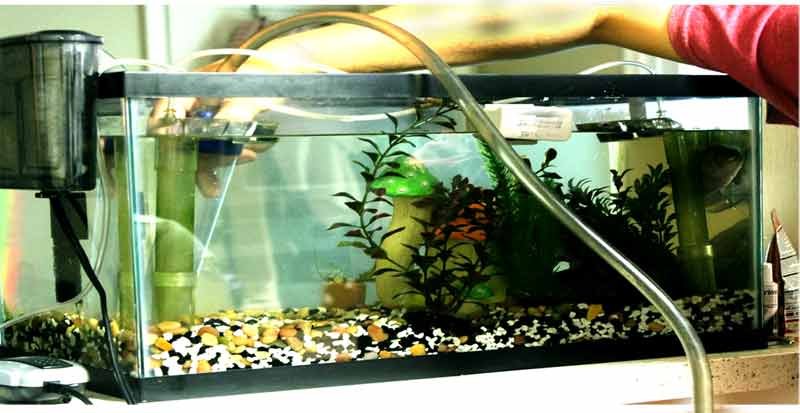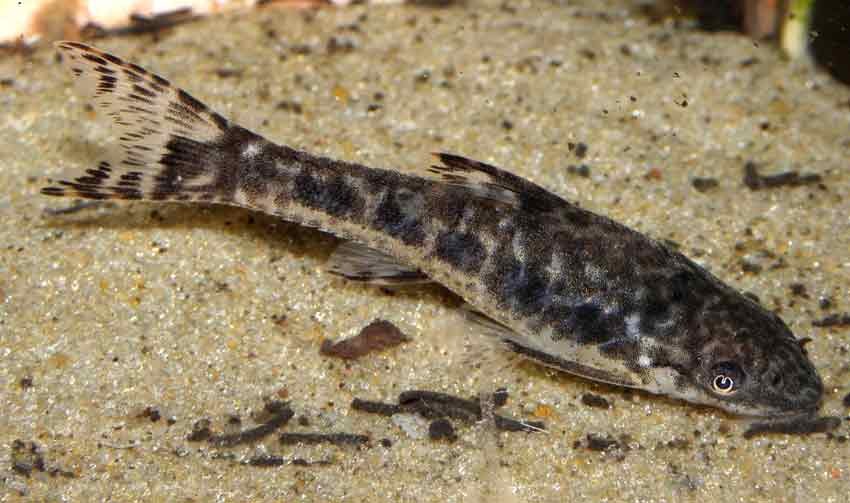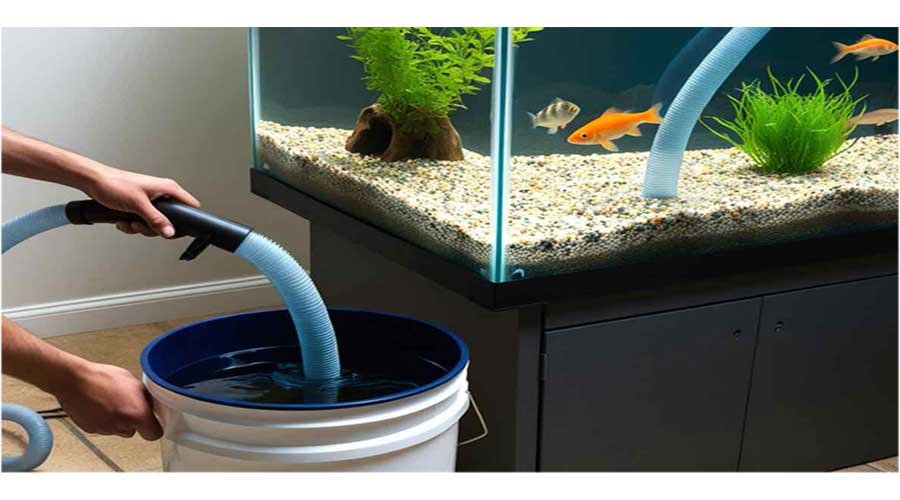How to Clean Aquarium Sand: Complete Guide
Cleaning aquarium sand not only enhances the beauty but is also very important for the health of fish and other aquatic animals. If the sand is not cleaned regularly, harmful bacteria and ammonia can accumulate in the aquarium, which can be dangerous for the fish. In this guide, I will discuss the complete process of how to clean aquarium sand. I am experienced in cleaning aquarium sand and have been keeping fish in aquariums for a long time.
Preparation for Cleaning Aquarium Sand
It is important to make some preparations before starting to clean the sand. This will make the work easier and safer.
Required Equipment
- Gravel vacuum cleaner: It pulls dirt and debris from the top of the sand.
- Bucket or basin: To hold clean and dirty water.
- Water change equipment: Siphon or pump.
- Soft brush or sponge: To clean the aquarium glass.
- Clean towel: To avoid any accidents.
- Filtered water: Pour the newly filtered water into the aquarium.
Safety Tips
- Keep fish and other animals at a safe distance.
- Control the water temperature and pH to the ideal level for your fish and other animals during cleaning.
- Do not use any chemicals.
Steps to Clean Aquarium Sand

Step 1: Turn Off the Power to the Aquarium
Since you will be working with water, first turn off the aquarium filter, heater, and light. This is important for safety, as electrical equipment can be dangerous when it comes into contact with water.
Step 2: Remove the Fish
Before cleaning the aquarium sand, the fish should be temporarily removed and placed in another container. The sand can be cleaned without removing the fish from the aquarium, but it is better to remove the fish to reduce their stress. Remember, the container in which you are keeping the fish needs to have the same temperature and suitable water.
Step 3: Use a Siphon Vacuum Cleaner
Remove as much dirt and food debris as possible from the top layer of sand with a siphon vacuum cleaner. Work the vacuum slowly over the sand to lift the dirt, but don’t remove too much sand.
- Place the siphon on the sand: Place one end of the siphon tube on the sand in the tank and the other end outside the tank, then run it slowly. It will start to draw water through the tube, pulling the dirt out of the sand.
- Stir the sand: While running the siphon, gently stir the sand so that the dirt and food debris at the bottom rise to the top.
- Remove the dirt: The siphon will pull the dirt from the sand and deposit it in the bucket. Since the sand is heavy, it will sink to the bottom, but the dirt will wash out with the water.
Precautions When Using the Siphon
- Don’t over-clean the sand: This can kill the beneficial bacteria.
- Avoid using chemicals: Use the siphon only for water flow and dirt removal.
- Ensure a safe environment for the fish: Keep the water temperature and pH level correct.
Advantages of Using a Siphon
- Fast and effective: The siphon quickly cleans the sand and removes dirt.
- Safe for the ecosystem: It does not destroy beneficial bacteria.
- Easy to use: The siphon is very easy to use and is suitable for any aquarium.
Step 4: Wash the Sand (If Necessary)
Remove the dirt under the sand as carefully as possible with a vacuum. If the dirt is heavy, you can remove the sand from some parts and wash it. Remember, do not remove all the sand at once, as this can upset the bacterial balance.
Step 5: Clean the Aquarium Glass
After cleaning the sand, clean the aquarium glass. Use a soft brush or sponge to remove any algae and dirt that has accumulated on the glass.
Step 6: Change the Water
While your siphon cleaner is sucking up water, you should change the water slowly. Change 25% to 30% of the total water in the aquarium. Use freshly filtered water that is safe for fish.
Step 7: Add Water
Return the cleaned sand to the aquarium and add the required amount of water. Check that the water temperature and pH level are ideal for your fish and other animals.
Step 8: Return the Fish to the Aquarium
If you removed the fish while cleaning the sand and water, return the fish to their original aquarium. Make sure the water has reached the correct temperature before releasing the fish into the aquarium.
Step 9: Connect the Power to the Aquarium
Since you turned off the power to the aquarium while cleaning the sand, connect the power now so that the important electrical equipment in the aquarium, such as the filter, heater, and light, can start their work.
The Appropriateness of the Cleaning Time for Aquarium Sand
It is recommended to clean the sand once a week or once every two weeks. If you have more fish in your aquarium or use more food, you should clean it a little more frequently. However, cleaning too often can upset the natural bacterial balance of the aquarium ecosystem.
Why Is It Important to Clean the Sand?

important to Clean the Sand
Aquarium sand is not just for decoration; it is also for aquatic animals. It creates a natural environment and is an important part of the underwater ecosystem. It stores nutrients, which are essential for fish and plant biodiversity.
However, if it is not cleaned properly, toxic ammonia and nitrate levels can increase, which is dangerous for fish. Regular sand cleaning keeps fish and aquatic plants healthy and maintains water clarity.
- Improves water quality.
- Keeps fish and other animals healthy.
- Maintains the beauty of the aquarium.
Some Tips for Cleaning Aquarium Sand
- Create a planned schedule: Follow a specific schedule and clean the sand regularly. Usually, the aquarium sand should be cleaned once every 2-4 weeks. However, this depends on the size of the aquarium, the number of fish, and the filter system.
- Avoid overfeeding: Excess food often accumulates in the sand and causes pollution. Feed the right amount of food.
- Be careful before adding new sand: Be sure to clean it when adding new sand. Unprepared sand can make the aquarium water dirty and cloudy.
Avoid Common Mistakes

Many people make some common mistakes while cleaning the aquarium sand, which is important to avoid. For example:
- Changing the water too often: Changing the water too often can upset the balance of beneficial bacteria.
- Digging the sand too deeply: It is not right to destroy the beneficial bacteria deep in the sand. So, do not dig the sand too deeply.
- Not using the right siphon cleaner: It is important to use the right type of siphon cleaner because it is not possible to clean the sand properly without the right equipment.
Maintaining a Healthy Aquarium Ecosystem
A regular process of cleaning the aquarium sand helps maintain the health of your aquarium. Cleaning the sand is very important for the well-being of the fish and keeping the water clean. Regular cleaning will make your aquarium look beautiful, and the fish will stay healthy for a long time.






